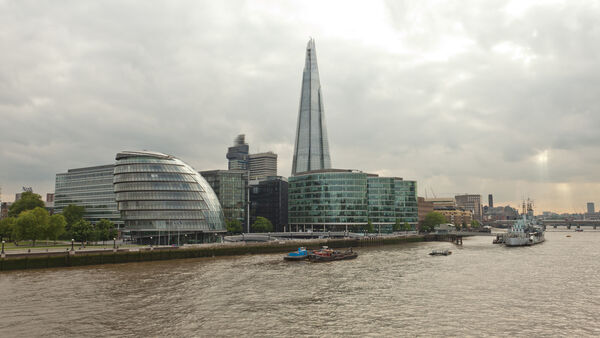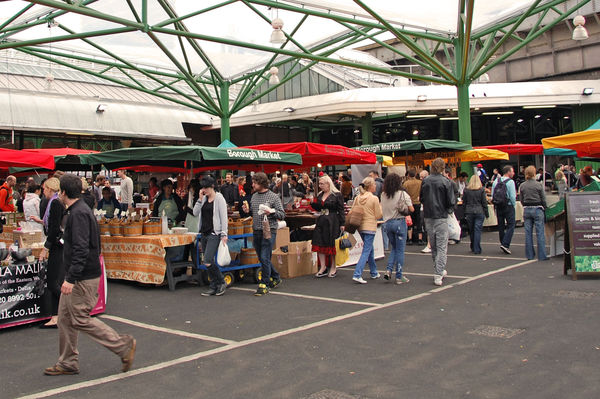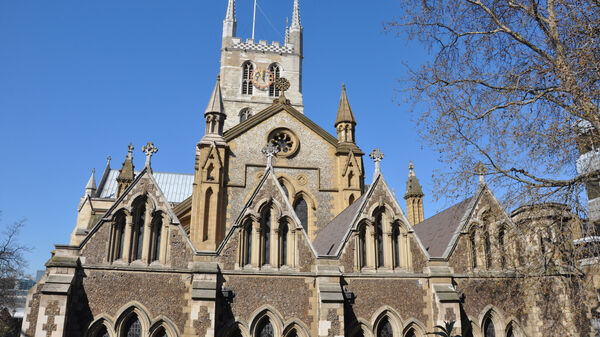Southwark Sights: Offbeat Stops Along London’s South Bank



By Rick Steves
The area stretching from the Tate Modern to London Bridge, known as Southwark (SUTH-uck), is easy on foot and a scenic — though circuitous — way to connect the Tower of London with St. Paul's.
This stretch of riverside was, for centuries, the place Londoners would go to escape the rules and decency of the city and let their hair down. Bear-baiting, brothels, rollicking pubs and theater — you name the dream, and it could be fulfilled just across the Thames. A run-down warehouse district through the 20th century, it's been gentrified with classy restaurants, office parks, pedestrian promenades, major sights (such as the Tate Modern — where you can ogle mind-bending 20th-century art — and the fun time warp that is Shakespeare's Globe), and some lesser-known ones:
Tower Bridge: The iconic Tower Bridge (often mistakenly called "London Bridge") has a Gothic look, but was built in 1894 to accommodate the growing East End. You can tour the bridge at the Tower Bridge Exhibition, with a history display and a peek at the Victorian engine room that lifts the span. It's overpriced, though the city views from the walkways are spectacular.
HMS Belfast: "The last big-gun armored warship of World War II" clogs the Thames just upstream from the Tower Bridge. This huge vessel — now manned with wax sailors — thrills kids who always dreamed of sitting in a turret shooting off their imaginary guns. If you're into WWII warships, this is the ultimate. Otherwise, it's just lots of exercise with a nice view of the Tower Bridge.
The Shard: Rocketing dramatically 1,020 feet above the south end of the London Bridge, this recent addition to London's skyline is by far the tallest building in Western Europe (for now). Designed by Renzo Piano (best known as the co-architect of Paris' Pompidou Center), the glass-clad pyramid shimmers in the sun and its prickly top glows like the city's nightlight after dark. Its uppermost floors are set aside as public viewing galleries, but the ticket price is as outrageously high as the building itself, especially given that it's a bit far from London's most exciting landmarks.
Old Operating Theatre Museum and Herb Garret: Climb a tight and creaky wooden spiral staircase to a church attic where you'll find a garret used to dry medicinal herbs, a fascinating exhibit on Victorian surgery, cases of well-described 19th-century medical paraphernalia, and a special look at "anesthesia, the defeat of pain." Then you stumble upon Britain's oldest operating theater, where limbs were sawed off way back in 1821.
Borough Market: London's oldest fruit and vegetable market has been serving the Southwark community for over 800 years. These days there are as many people taking photos as buying the fruit, cheese, and beautiful breads, but it's still a fun carnival atmosphere with fantastic stall food.
Southwark Cathedral: While made a cathedral only in 1905, it's been the neighborhood church since the 13th century, and comes with some interesting history. This was William Shakespeare's local church while he was working at the nearby Globe Theatre, and also the site of John Harvard's baptism (before he moved to America and made his college-founding fortune). The enthusiastic docents give impromptu tours if you ask.
Golden Hinde Replica: This is a full-size replica of the 16th-century warship in which Sir Francis Drake circumnavigated the globe from 1577 to 1580. Commanding the original ship (now long gone), Drake earned his reputation as history's most successful pirate. This replica, however, has logged more than 100,000 miles, including a voyage around the world. While the ship is fun to see, its interior is not worth touring.
The Clink Prison Museum: Proudly the "original clink," this was, until 1780, where law-abiding citizens threw Southwark troublemakers. Today, it's a low-tech torture museum filling grotty old rooms with papier-mâché gore. There are storyboards about those unfortunate enough to be thrown in the Clink, but little that seriously deals with the fascinating problem of law and order in Southwark, where 18th-century Londoners went for a good time.
Millennium Bridge: The pedestrian bridge links St. Paul's Cathedral and the Tate Modern across the Thames. This is London's first new bridge in a century. When it opened, the $25 million bridge wiggled when people walked on it, so it promptly closed for repairs; 20 months and $8 million later, it reopened. Nicknamed the "blade of light" for its sleek minimalist design (370 yards long, four yards wide, stainless steel with teak planks), its clever aerodynamic handrails deflect wind over the heads of pedestrians.

